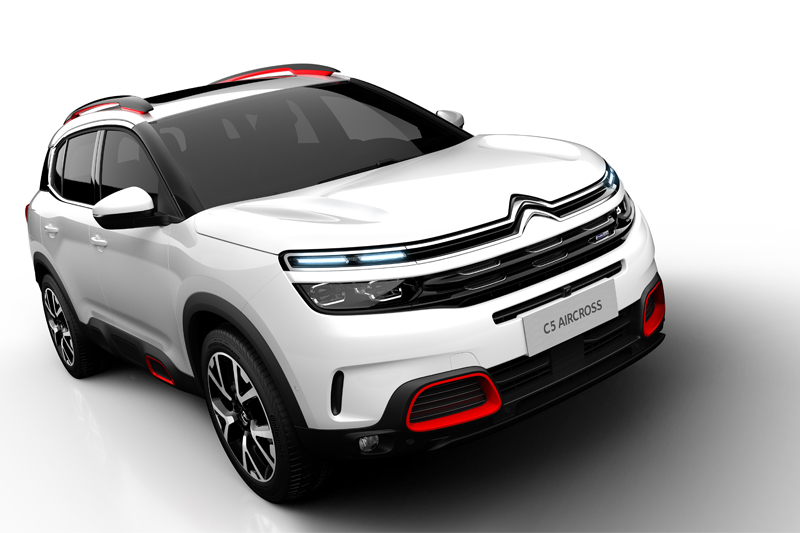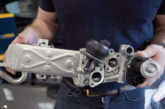
PMM uncovers some progressive new suspension technology that might find its way into your garage sooner than you think.

The new Citroën C5 Aircross was launched in 2017, and KYB was selected as the Original Equipment supplier for the shock absorbers. The initial reviews in the automotive press described the behaviour of the vehicle as: “an ultra-comfortable hatchback with a unique personality”, with one commentator enthusing that “even before we’d driven our first mile, the improvements in comfort and overall refinement are little short of astonishing”.
Active suspension is starting to become a reality in passenger cars, and semi-active solutions are conquering more segments of the market. Thanks to the joint development between KYB and PSA, a suspension concept based on passive shock absorbers, capable of merging high performance with competitive costs, has been developed and applied to the Aircross. Citroën is calling the system Progressive Hydraulic Cushions.
The secret of this concept is a double hydraulic stops system. The total stroke of the shock absorbers can be divided into three differentiated parts, for which the shock absorber will provide different characteristics. The first part corresponds to the position around the center of the stroke. In this working area the conventional valving in the piston and the base valve provide the damping forces. The second and third parts correspond to the positions close to the end of the rebound and the compression strokes, with the hydraulic compression and rebound stops responsible for providing additional energy absorption.
This split allows the shock absorbers’ main valves to provide comfort and allows the hydraulic stops to take responsibility when more demanding situations are encountered. In order to achieve this effectively, both the rebound and compression stops have to be able to provide sufficient energy absorption and to have a very flexible response. The stops provide an unprecedented comfort level, and give what Citroën describes as a ‘flying carpet effect’, as the car feels like it’s flying over bumps and holes in the road.
KYB Europe’s General Manager for Aftermarket Product Management, Jean François Huan, explains: “This is another great example of the pioneering research and development that our OE engineers are famous for. I look forward to seeing how this new technology develops in the aftermarket”.
The challenges faced by KYB during the development of this double hydraulic stop system were reportedly huge. One important point was to keep the main damping law of the shock absorber invariable by the components that are part of the hydraulic stops. This goal was achieved by hydraulic and FEA calculations, and was verified by driving tests.
Another key requirement was to design the different components with sufficient robustness, in order that they withstand the high demands of the vehicle, even in the worst conditions. To be able to achieve this objective, KYB studied different material options and several geometries before reaching the optimal solution. Naturally, all components had to be built with the highest precision.
The working principle for the rebound stop is based on a reinforced plastic segment that is placed in the inner tube of the shock absorber through a deformation that defines the working area of the hydraulic rebound stop. When the rebound washer contacts the segment, a new oil chamber is created, meaning the oil is only capable of getting out of the chamber through the aperture of the segment. This controlled flow generates a hydraulic force that can be tuned with the adjustment of the segment opening. Additionally, the working area of this hydraulic stop can be tuned by changing the inner tube deformation length.
For the hydraulic compression stop, a similar principle is used. A new oil chamber is created by the interaction of a polymer component placed in the shock absorber piston and a metallic tube press fitted in the base valve assembly. The polymer part is built with some slots for the oil passage, which will allow tuning the efforts provided by the system. In order to achieve the desired maximum effort, a pre-compressed additional valve is placed in the base valve sub- assembly. The installation of the hydraulic compression stop enables the car manufacturer to simplify other suspension components, such as the compression bumper, as well as to redefine some structural parts, because of the lower efforts that will be transmitted to the vehicle chassis.
KYB was able to develop a system that combines robustness with a wide tuning range, which provides the vehicle with a soft damping when comfort is demanded and with excellent handling when control is needed. It is important to highlight that these features are met with a passive system, which assures an excellent response time and a competitive cost, according to the company. KYB is applying the double hydraulic stop system in other forthcoming vehicles in the European market – for instance the Citroën C4 Cactus – so keep an eye out!









